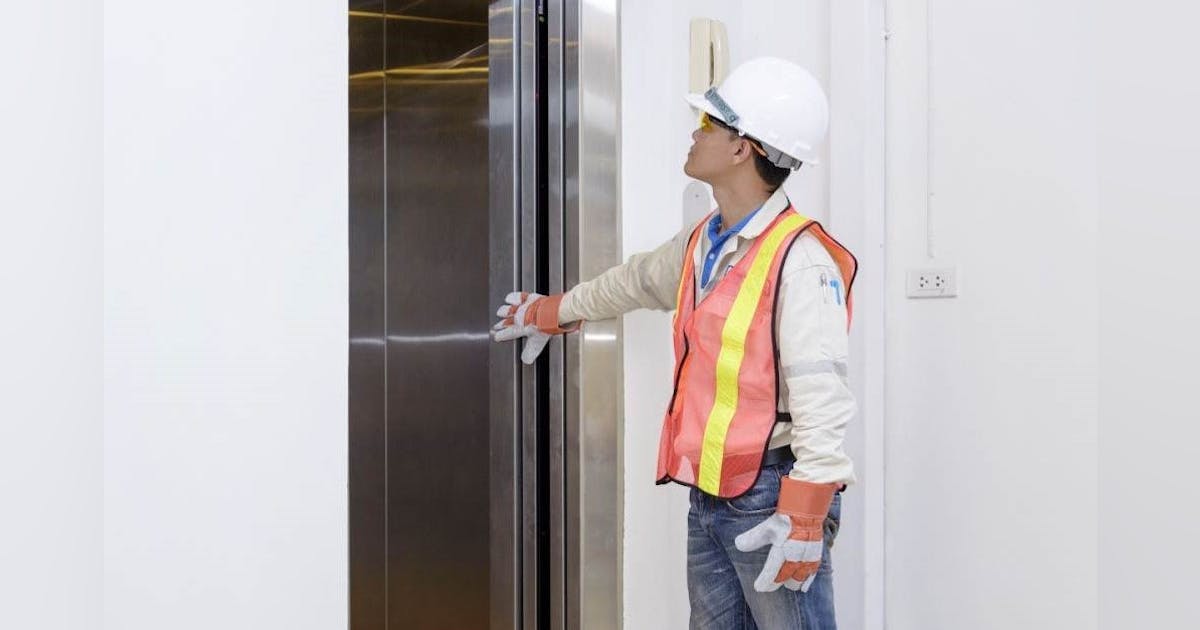Economical Lift and Engineering Services for All Kinds Of Elevators
Economical Lift and Engineering Services for All Kinds Of Elevators
Blog Article
Exploring the Important Aspects of Elevator Upkeep Practices
From regular evaluations to implementing preventative upkeep steps, every element of upkeep adds to the general performance and longevity of lift systems. By discovering these nuances, a deeper understanding of lift upkeep methods can be gotten, dropping light on the details that make a significant difference in elevator efficiency and security.
Relevance of Routine Examinations
Regular examinations are a vital element of lift maintenance, guaranteeing the safety and security and effectiveness of the system. These regular checks are necessary in identifying possible issues prior to they escalate right into major troubles, thus protecting against expensive fixings and downtimes. During inspections, trained technicians thoroughly examine numerous components such as cords, pulleys, electric motors, and safety functions to guarantee they are functioning appropriately. By adhering to a routine assessment routine, building owners and center supervisors can guarantee that their elevators satisfy all safety and security policies and requirements. Moreover, proactive maintenance via normal evaluations can prolong the life-span of the lift equipment, ultimately saving money on substitute expenses in the future. Additionally, these evaluations play a crucial function in boosting the total guest experience by reducing the occurrence of unforeseen malfunctions or disturbances in solution. To conclude, regular evaluations are not simply an upkeep task but an aggressive procedure to maintain elevator long life, security, and dependability.

Preventive Upkeep Measures
Structure on the structure of normal examinations for lift maintenance, preventative upkeep measures offer as positive techniques to further improve the dependability and durability of lift systems. These actions involve scheduled jobs targeted at avoiding possible issues before they rise into costly issues or create downtime. Key elements of preventative maintenance for elevators consist of oiling moving parts, readjusting door systems, screening safety attributes, and examining electric systems. By adhering to a structured precautionary upkeep routine, structure owners and center managers can minimize the risk of unforeseen malfunctions, minimize repair expenses, and make sure guest safety and security.
Consistently changing damaged parts, such as wires, pulleys, and control systems, is also vital in precautionary maintenance to mitigate the risk of malfunctions. lift and engineering services. In addition, conducting complete efficiency examinations and keeping in-depth maintenance records can assist identify patterns of wear and possible areas for improvement. Implementing these preventative upkeep steps not just boosts the general efficiency of lift systems but also adds to a much safer and much more click for source trustworthy vertical transport experience for developing passengers
Role of Educated Specialists

Additionally, skilled professionals are equipped to take care of emergency scenarios promptly and efficiently - lift maintenance. In the event of a breakdown or entrapment, their knowledge enables them to fix troubles efficiently, lessening downtime and bring back lift functionality quickly. Additionally, these specialists remain updated on industry criteria and technical improvements, enabling them to implement the current upkeep methods and ensure compliance with safety and security laws
Enhancing Efficiency Via Upkeep
Educated specialists' proficiency in lift maintenance not just guarantees security and optimal performance yet also serves as a foundation for boosting overall system efficiency through careful upkeep techniques. Via regular assessments, lubrication of moving components, and adjustments to ensure positioning, service technicians can adjust the lift system for peak effectiveness.
In addition, proactive maintenance actions can extend the life expectancy of lift parts, lowering the need for premature substitutes. In general, prioritizing upkeep not only improves elevator performance yet additionally improves security, dependability, and total contentment for developing passengers.

Longevity of Lift Systems
Maintaining the longevity of lift systems calls for a tactical mix of proactive upkeep techniques and adherence to market standards. Executing a precautionary upkeep schedule can help identify possible issues before they intensify, therefore expanding the lifespan of the elevator system.
Additionally, conformity with industry policies and requirements is critical for the effective and secure operation of elevators. Complying with visite site standards established by organizations such as the American Culture of Mechanical Designers (ASME) ensures that maintenance jobs are performed correctly and that safety and security protocols are maintained. Failure to comply with these criteria not only jeopardizes the durability of the elevator system however additionally postures significant dangers to the owners.
Conclusion
Finally, the important facets of lift maintenance methods consist of routine inspections, precautionary upkeep measures, the function of skilled specialists, boosting performance via upkeep, and ensuring the durability of elevator systems. By sticking to these techniques, building proprietors can make certain the safety and security, dependability, and efficiency of their elevator systems, inevitably minimizing the danger of expensive repair services and downtime. Preserving lifts in optimal condition is important for the wellness of owners and the smooth procedure of buildings.
By discovering these subtleties, a deeper understanding of lift upkeep practices can be acquired, shedding light on the details that make a considerable distinction in elevator performance and security.
Normal assessments are a vital aspect of elevator upkeep, making certain the safety and efficiency of the system.Structure on the foundation of normal evaluations for elevator maintenance, preventive upkeep steps offer as proactive approaches to even more boost the reliability and long life of elevator systems.Trained specialists' competence in lift maintenance not just ensures safety and security and optimal efficiency however additionally offers as a foundation for enhancing overall system efficiency via precise upkeep techniques.In conclusion, the crucial aspects of lift maintenance methods consist of routine assessments, precautionary upkeep steps, the role of trained technicians, boosting performance with upkeep, and ensuring the durability of lift systems.
Report this page